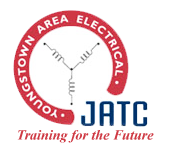Applicants for Electrical Apprenticeship who complete the application process (your status can be viewed on your online portal) will be scheduled to take the NJATC Apprentice Selection Aptitude Test Battery.

- Bring a photo ID to the test. Your ID will be checked. No ID, no test. No exceptions!
- Arrive 10-15 minutes before the scheduled test time. Late entries will not be permitted. A late show is the same as a “No Show.”
- Calculators may NOT be used during the test. Do not bring any type of calculator. Pencils and scrap paper are provided for computation.
- If you do not receive a qualifying score (4 or higher), you will not be eligible to retake the test (at any JATC in the country) for a period of six months.
What to expect
- The test is administered at our location and takes approximately two-and-a-half hours to complete. It consists of two parts: Math and Reading Comprehension (see a sample test below). A short break is given in-between.
- Our office receives results from the test approximately two weeks from the test date.
- Applicants receiving a score of at least 4 (out of a possible 9) will be advanced to the next step of the application process, a personal interview with the JATC Committee.
